hankyoreh
Links to other country sites 다른 나라 사이트 링크
[Korea travels] Strolling through history in Incheon’s Gaehangjang, the birthplace of jjajangmyeon
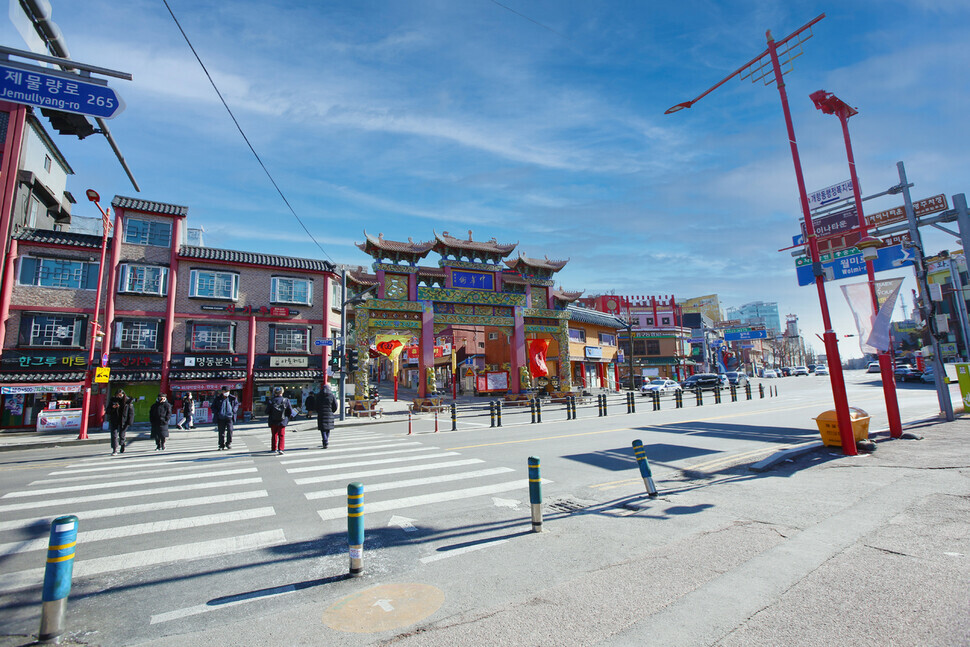
The central Jung District of Incheon Metropolitan City is a cradle of modern and contemporary Korean history. Still scattered throughout the city are remnants of the open port area — such as the first modern building in Korean history and residential areas for foreigners, called jogyeji — where foreigners were allowed to come and go and participate in trade after the port of Jemulpo, now Incheon Port, opened in 1883, the 20th year of King Gojong’s reign.
Administratively, the Sinpo, Gaehang, and Dongincheon neighborhoods of the Jung District constitute the open port area, or Gaehangjang. The entry point of Western civilization into Korea, Gaehangjang is also a site of Korea’s painful past, where the Japanese empire began its enterprise of exploitation against Koreans in earnest. Now, the location is a popular travel destination among young Koreans who are keen to explore its multicultural scenery and nostalgic atmosphere.

On Feb. 4, I visited the Chinatown in the Gaehang neighborhood of Incheon, the first stop of my Gaehangjang tour. From Incheon Station, I could see a pailou, a traditional Chinese archway, with a red sign board that read “Junghwaga” in Chinese characters across the street. The first of four pailous that mark the borders of the Chinatown, the gateway is the southern and main entrance of the area, called “Junghwaga,” as the phrase means “the Chinese quarter.”
As soon as I stepped through the gate, I could see Chinese pastry shops selling balloon bread and oven-baked dumplings, lamb skewer joints, and dozens of Chinese restaurants with red signs lining the street. Red papers with the Chinese character for “luck” written on them flapped with the wind. It felt like I was in a small town in China — the Chinatown was known as “the little China of Korea” after all. Though it had been a popular tourist destination for quite some time, I could still see some stores that had closed due to the COVID-19 pandemic.
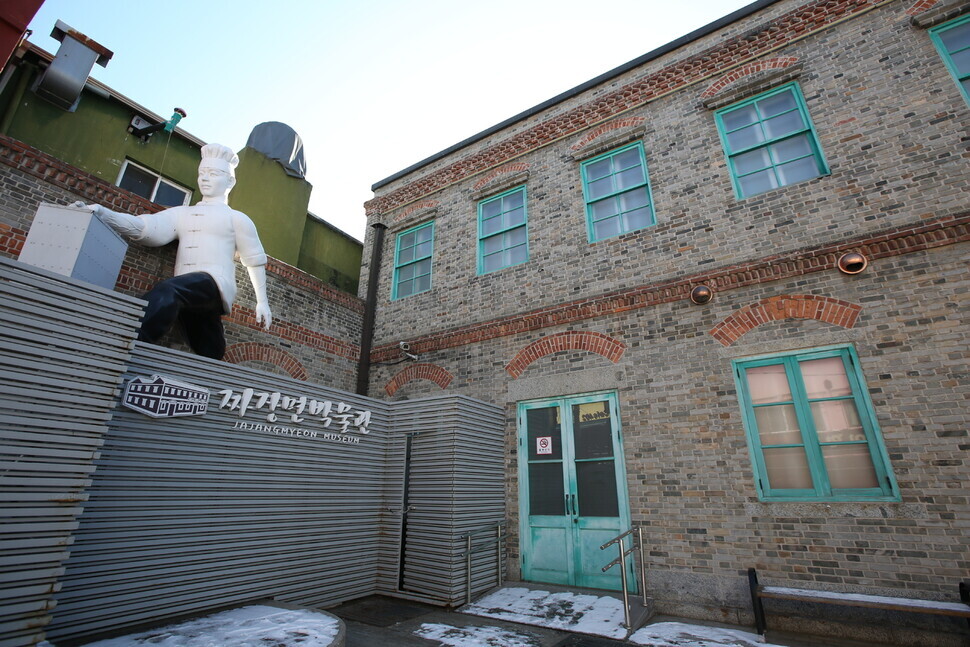
The Chinatown was born when Incheon opened its port in 1883. It was where Chinese people who arrived at the port lived together — a jogyeji for people from the Qing Dynasty. It’s also where the history of ethnic Chinese in Korea began. Currently, around 170 households comprising 500 or so second- and third-generation ethnic Chinese live in this area.
One of the best-known tourist destinations in Incheon, Chinatown is also the birthplace of black bean noodles, or jjajangmyeon. The dish originated from zhajiangmian, noodles mixed with vegetables and soybean paste popular among ethnic Chinese from China’s Shandong region. It became the black jjajangmyeon we enjoy in Korea today when chunjang, soybean paste combined with caramel, replaced regular soybean paste as its ingredient after Korean independence.
In keeping with its legacy as the birthplace of jjajangmyeon, Incheon’s Chinatown is home to the Jjajangmyeon Museum, registered as a national cultural heritage. A two-story building, it was originally the Chinese restaurant Gonghwachun but was renovated to house the museum. Gonghwachun is known as the first restaurant to develop and offer jjajangmyeon on its menu. As such, the museum showcases the birth and history of the Korean Chinese noodle dish, as well as how its recipe transformed over time. Exhibited in the museum are also lifelike models of Gonghwachun’s reception area from the 1930s and the restaurant’s kitchen area from the 1960s. The museum is open Tuesdays to Sundays from 9 am to 6 pm, and the admission fee is 1,000 won for adults.
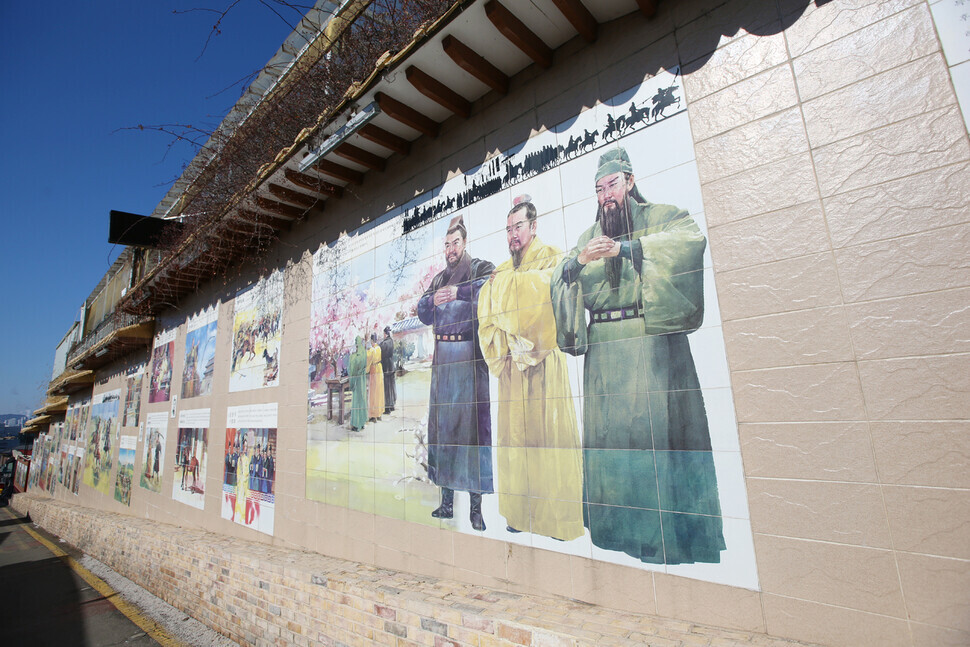
An uphill walk towards Freedom Park from the museum will take travelers to the Three Kingdoms Mural Street. The street is home to over 160 murals that depict key scenes from the “Records of the Three Kingdoms.” A 150-meter-long mural portraying Zhuge Liang, Liu Bei, Guan Yu and more adorn the area.
Walking up the street while admiring the murals will lead travelers to Freedom Park. Known in Incheon for its cherry blossoms, Freedom Park is the first Western-style modern park in Korea developed in 1888 within Gaehangjang’s jogyeji. A space of leisure for foreigners who created the park after coming to Korea from all over the world, it was originally called Manguk Park, or “the park of every country,” but was renamed Freedom Park after the Battle of Incheon commanded by General MacArthur. The area was home to foreigners from the US, the UK, and other countries following the opening of Incheon’s port.
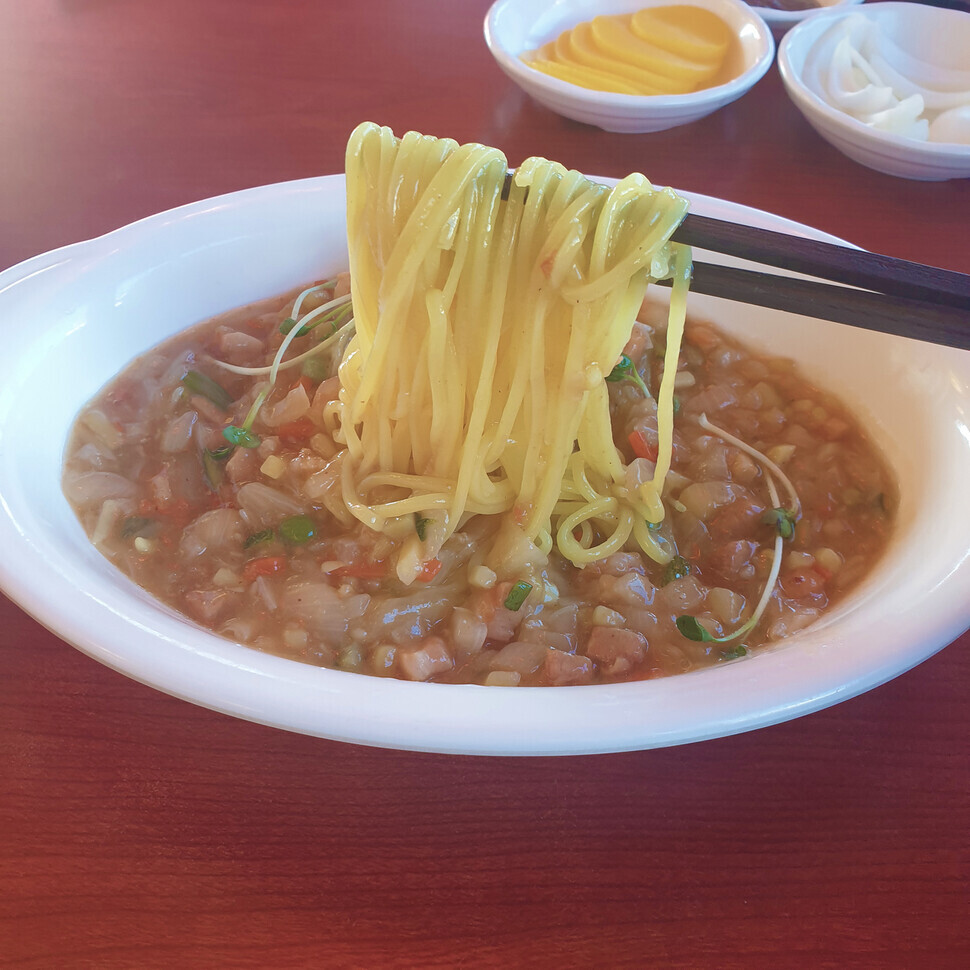
Located near Freedom Park is Jemulpo Gurakbu, a social club for foreigners living in Incheon during modern times. Better known as one of the filming sites of the K-drama “Goblin: The Lonely and Great God” starring Gong Yoo, the building is a two-story brick structure constructed in June 1901 complete with a library and a pool room. The building is open to the public free of charge from Tuesdays to Sundays.
Walking downhill from Freedom Park towards Chinatown will take travelers to the boundary stairway between the Qing Dynasty and Japanese settlements. Up the stairs stands a statue of Confucius, donated by the city of Qingdao, China. The stairway acts as a border between the Japanese jogyeji, where Japanese people lived, and the Qing jogyeji, where the Chinese people lived, the atmosphere on one side of the stairway completely distinct from the atmosphere on the other. If the Chinese side boasts a flashier scenery with various food stands and restaurants, the Japanese side is more subdued, composed of Japanese-style wood buildings and modern architecture.
Kim Mi-young, a culture and tour guide for the city of Incheon, said, “The boundary stairway between the Qing Dynasty and Japanese settlements provides visitors a bird’s-eye view of foreign settlements and Incheon Port at a glance.” She added, “As a site that symbolizes the multicultural identity of Gaehangjang’s history and culture, it’s a must-visit attraction for travelers touring Gaehangjang.”

While the Qing jogyeji developed into a Chinatown and became well known, the Japanese jogyeji right next to it livened up in recent years thanks to urban regeneration programs. The many Japanese-style wood buildings that populate the area make it evident that Japanese people lived there in modern times. Many of these buildings from dozens to over a hundred years ago are being remodeled and transformed into cultural spaces or coffee shops.
Another museum of modern history located in the Japanese jogyeji is the Incheon Open Port Modern Architecture Exhibition Hall, recommended to travelers interested in modern architecture. The museum is housed in the Incheon branch of the former 18th Bank of Japan, constructed in 1890. It was the bank founded by Japan in Incheon, the trade and customs center of Korea, in order to control Korea’s finance sector once Japan found intermediary trade of cotton fabrics to China profitable.

Displayed in the exhibit are photos of Incheon’s early modern architecture such as the former Incheon Post Office, Naeri Church, and the former Incheon Station, as well as models of now lost Western-style architecture such as the former Johnston Villa and the former British Consulate. A guided tour of the history and characteristics of Incheon’s modern architecture is available at the museum. The safe of the 18th Bank of Japan is immaculately preserved in the building and now serves as an exhibit of Gaehangjang’s bank district.
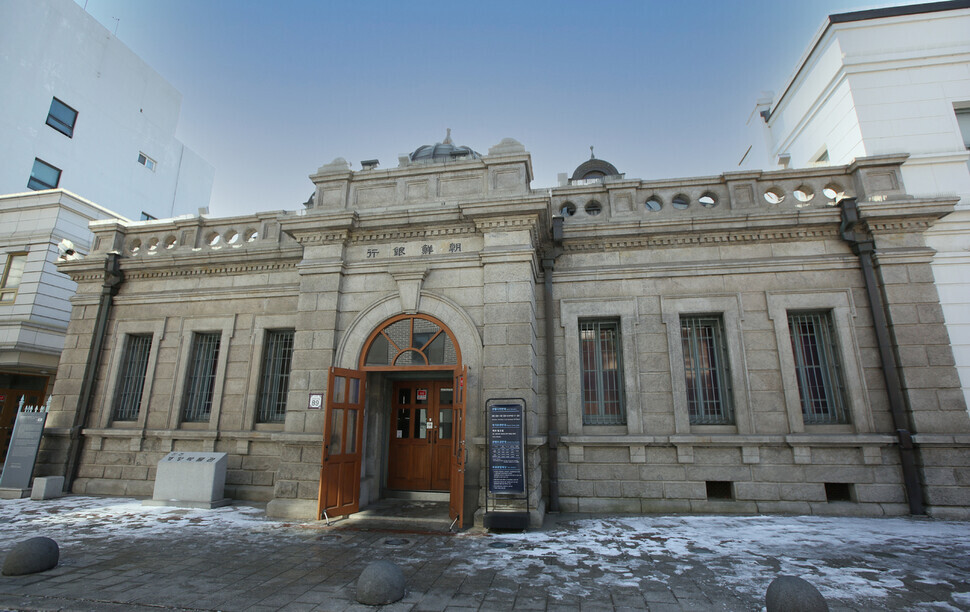
Right next to the Incheon Open Port Modern Architecture Exhibition Hall is the Incheon Open Port Museum, which showcases the history of Incheon’s open port at a glance. A Renaissance stone building constructed in 1899, the museum building previously housed the First Bank of Japan, Incheon Branch. The museum features various artifacts of modern times introduced to Incheon from 1883, when its port opened, to 1910, when Japanese colonial rule began, providing visitors with an overview of Incheon during the early modern period following its port opening.
The Daebul Hotel Exhibition Hall is located near the Incheon Open Port Museum. The first Western-style hotel in Korea, Daebul Hotel was demolished in 1978 but reconstructed as an exhibition hall to accurately reproduce the building’s exterior based on historical research. The museum consists of Hall No. 1, which showcases the history of Daebul Hotel, and Hall No. 2, which allows visitors to experience the living history of the Jung District of Incheon during the 1960s and ‘70s.

Incheon Art Platform is a three-minute walk away from the Daebul Hotel Exhibition Hall. Composed of buildings from the 1930s and ‘40s that were remodeled, the arts center is home to 13 facilities ranging from creative studios to workshops and exhibits. Previously modern historical sites, the buildings have been transformed into art spaces by contemporary artists. Located at one corner of the historical arts center is a statue of Gaehangjang’s A-frame jigae carrier with a weary expression on his face in front of a brick building. Representing a Korean laborer working at Incheon’s open port, the statue embodies the rundown lives of laborers who fulfilled the lowliest of works amidst the historical whirlwind of those times.
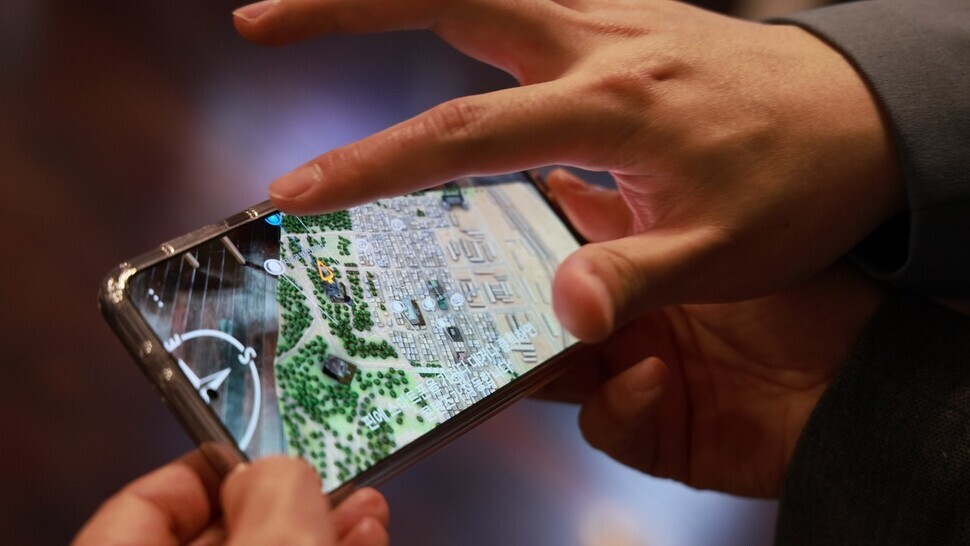
Culture and tour guide Kim Mi-young said, “Incheon’s Gaehangjang is a historical site that represents the pain of losing one’s country and being exploited. It was also where foreigners from around the world lived and worked, a hip area at the time, so to speak, where foreign products were introduced in Korea the earliest.”
She continued, “As it’s home to many of the earliest Korean buildings related to modern history, tourists will be able to encounter various historical sites by exploring Gaehangjang’s nooks and crannies as if in search of a hidden treasure.”
By Her Yun-hee, staff reporter
Please direct questions or comments to [english@hani.co.kr]

Editorial・opinion
![[Column] The state is back — but is it in business? [Column] The state is back — but is it in business?](https://flexible.img.hani.co.kr/flexible/normal/500/300/imgdb/original/2024/0506/8217149564092725.jpg) [Column] The state is back — but is it in business?
[Column] The state is back — but is it in business?![[Column] Life on our Trisolaris [Column] Life on our Trisolaris](https://flexible.img.hani.co.kr/flexible/normal/500/300/imgdb/original/2024/0505/4817148682278544.jpg) [Column] Life on our Trisolaris
[Column] Life on our Trisolaris- [Editorial] Penalties for airing allegations against Korea’s first lady endanger free press
- [Editorial] Yoon must halt procurement of SM-3 interceptor missiles
- [Guest essay] Maybe Korea’s rapid population decline is an opportunity, not a crisis
- [Column] Can Yoon steer diplomacy with Russia, China back on track?
- [Column] Season 2 of special prosecutor probe may be coming to Korea soon
- [Column] Park Geun-hye déjà vu in Yoon Suk-yeol
- [Editorial] New weight of N. Korea’s nuclear threats makes dialogue all the more urgent
- [Guest essay] The real reason Korea’s new right wants to dub Rhee a founding father
Most viewed articles
- 1Amid US-China clash, Korea must remember its failures in the 19th century, advises scholar
- 260% of young Koreans see no need to have kids after marriage
- 3[Column] Life on our Trisolaris
- 4[Column] The state is back — but is it in business?
- 5New sex-ed guidelines forbid teaching about homosexuality
- 6How daycares became the most viable business for the self-employed
- 7Presidential office warns of veto in response to opposition passing special counsel probe act
- 8[Reporter’s notebook] In Min’s world, she’s the artist — and NewJeans is her art
- 9Trump asks why US would defend Korea, hints at hiking Seoul’s defense cost burden
- 10OECD upgrades Korea’s growth forecast from 2.2% to 2.6%